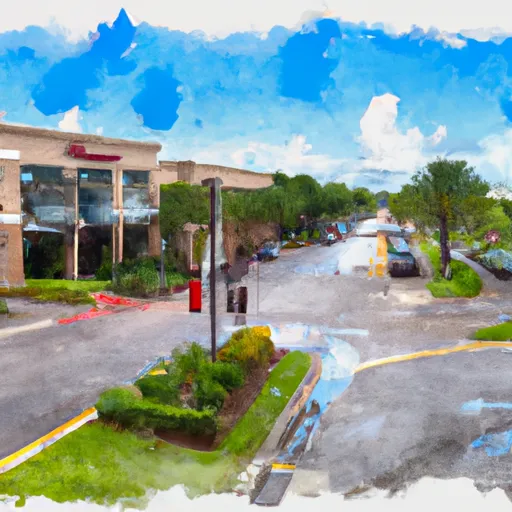-
 Snoflo Premium
Snoflo Premium
Get unlimited access to all our content
With no Ad interruptions! - Start Your Free Trial Login with existing account
City-Of-Sunrise
Eden Index
Climate
5.2
•
Recreation
5.7
•
Community
2.3
•
Safeguard
4.7/10

City of Sunrise is located in the heart of Florida and boasts a tropical climate with hot summers and mild winters. The city is surrounded by waterways, including the New River, which provides residents with plenty of opportunities for outdoor recreation such as fishing, boating, and kayaking. Hydrology constituents include South Florida's unique Everglades ecosystem, which supports a diverse range of flora and fauna, as well as the aquifers that supply the city with its drinking water. Additionally, the city features a number of parks and nature preserves, such as the Markham Park and Target Range and the Sawgrass Sanctuary, which offer opportunities for hiking, biking, and wildlife viewing. Overall, City of Sunrise offers a vibrant and active outdoor lifestyle for residents and visitors alike.
What is the Eden Index?
The Snoflo Eden Index serves as a comprehensive rating system for regions, evaluating their desirability through a holistic assessment of climate health, outdoor recreation opportunities, and natural disaster risk, acknowledging the profound impact of these factors on livability and well-being.
Climate Health Indicator (CHI): 5.2
City-Of-Sunrise receives approximately
1640mm of rain per year,
with humidity levels near 82%
and air temperatures averaging around
24°C.
City-Of-Sunrise has a plant hardyness factor of
10, meaning
plants and agriculture in this region tend to thrive here all year round.
By considering the ideal temperature range, reliable water supplies, clean air, and stable seasonal rain or snowpacks, the Climate Health Indicator (CHI) underscores the significance of a healthy climate as the foundation for quality living.
A healthy climate is paramount for ensuring a high quality of life and livability in a region, fostering both physical well-being and environmental harmony. This can be characterized by ideal temperatures, reliable access to water supplies, clean air, and consistent seasonal rain or snowpacks.
Weather Forecast
Streamflow Conditions
Southern Florida
Area Rivers
Southern Florida
Snowpack Depths
Southern Florida
Reservoir Storage Capacity
Southern Florida
Groundwater Levels
Recreational Opportunity Index (ROI): 5.7
The Recreational Opportunity Index (ROI) recognizes the value of outdoor recreational options, such as parks, hiking trails, camping sites, and fishing spots, while acknowledging that climate plays a pivotal role in ensuring the comfort and consistency of these experiences.
Access to outdoor recreational opportunities, encompassing activities such as parks, hiking, camping, and fishing, is crucial for overall well-being, and the climate plays a pivotal role in enabling and enhancing these experiences, ensuring that individuals can engage in nature-based activities comfortably and consistently.
Camping Areas
| Campground | Campsites | Reservations | Toilets | Showers | Elevation |
|---|---|---|---|---|---|
| Quiet Waters Park | None | 14 ft | |||
| CB Smith Park | None | 6 ft | |||
| Markham Park | 86 | 10 ft | |||
| St. Lucie Lock | None | 20 ft | |||
| Easterlin Park | None | 3 ft | |||
| Jonathan Dickinson State Park | None | 25 ft | |||
| Savannas Recreational Park | 56 | 16 ft | |||
| Topeekeegee Yugnee County Park | 60 | 5 ft | |||
| Larry and Penny Thompson Park | None | -1 ft | |||
| Phipps County Park | None | 14 ft |
Catastrophe Safeguard Index (CSI):
The Catastrophe Safeguard Index (CSI) recognizes that natural disaster risk, encompassing floods, fires, hurricanes, and tornadoes, can drastically affect safety and the overall appeal of an area.
The level of natural disaster risk in a region significantly affects safety and the overall livability, with climate change amplifying these risks by potentially increasing the frequency and intensity of events like floods, fires, hurricanes, and tornadoes, thereby posing substantial challenges to community resilience and well-being.
Community Resilience Indicator (CRI): 2.3
The Community Resilience Indicator (CRI) recognizes that education, healthcare, and socioeconomics are crucial to the well-being of a region. The CRI acknowledges the profound impact of these elements on residents' overall quality of life. By evaluating educational resources, healthcare accessibility, and economic inclusivity, the index captures the essential aspects that contribute to a thriving community, fostering resident satisfaction, equity, and social cohesion.

